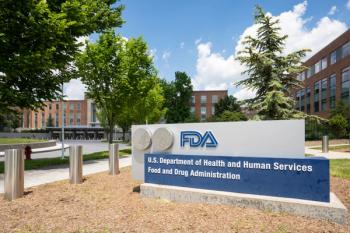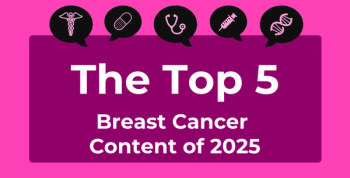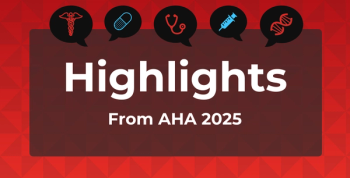
Majority of Qualifying Patients Do Not Receive SGLT2i Therapy
Key Takeaways
- SGLT2i therapy reduces HF events and cardiovascular deaths, but many eligible patients remain untreated, especially older adults and females.
- Prescription rates increased from 4.6% in 2019 to 16.2% in 2023, with higher uptake in HFrEF patients.
The majority of patients with heart failure who qualified for sodium-glucose cotransporter 2 inhibitor (SGLT2i) therapy did not receive treatment; a recent study aims to find out why and measure prescription trends.
Sodium-glucose cotransporter 2 inhibitor (SGLT2i) therapy is associated with a reduced risk of
To be precise, the study sought to establish trends in SGLT2i therapy by different left ventricular ejection fraction (LVEF) in HFREG, HFmrEF, or HFpEF; factors influencing SGLT2i therapy prescription; and variation across practices among patients with HF. The study population consisted of patients older than 18 years who had clinical encounters dating from July 1, 2019, to June 30, 2023, and also had a diagnosis of HF and available SGLT2i prescription information. Those with adverse drug reactions or allergies to SGLT2i, a history of cardiac transplant, a current left ventricular assist device, chronic kidney disease stage V or higher, or who had only received care in the Practice Innovation and Clinical Excellence Registry were excluded.
A total of 759,91 patients with HF were eligible for SGLT2i therapy across 191 participating sites. More than half (52.7%; n = 399,785) of patients were male, 14.6% (49,252) of patients were Black, 82.7% (278,303) were White, and 2.6% (8616) were other (Native American, Alaskan, or Hawaiian, Asian, Pacific Islander, Hispanic, or Latino). Among patients with HF, there were 114,702 (15.1%) with HFrEF, 411,352 (54.1%) with HFmrEF or HFpEF, and 233,861 (30.8%) without an EF measurement. However, only 10.1% (79,927) were prescribed SGLT2i therapy, and these patients were observed to be significantly younger (mean [SD] age, 68 [12] years vs 70 [14] years, standardized difference, 0.104), male (61.5% vs 51.7%, standardized difference, 0.198), and had higher rates of hypertension (87.7% vs 80.0%, standardized difference 0.210).
Furthermore, patients with type 2 diabetes saw significantly higher prescription rates of SGLT2is compared with those without diabetes. More specifically, 19.5% (47,151 of 241,716) of patients with HF and type 2 diabetes were prescribed SGLT2i therapy compared with 5.7% (29,776 of 518,199) for patients without type 2 diabetes.
Overall, rates of SGLT2i use among patients with HF significantly increased from 4.6% (8315 of 180732) during the third quarter of 2019 to 16.2% (26654 of 164692) during the second quarter of 2023. However, there were more significant increases in rates of SGLT2is among patients specifically with HFrEF (5.1% [1657 of 32,833] to 28.5% [7602 of 26,636]) and patients with HFmrEF and HFpEF (4.5% [4338 of 96,054] to 12.8% [12,567 of 98,306]).
The study found that in contemporary cardiovascular ambulatory care, the majority of patients eligible for SGLT2i therapy did not receive it. Factors associated with lower rates of SGLT2i use included older age, female sex, and higher systolic blood pressure, despite previous studies that associate greater benefits of SGLT2i use in women with HF, who also tend to experience higher symptom burdens.4 SGLT2i use was also lower in patients with HFmrEF or HFpEF when compared with those with HFrEF.
“Taken together, these findings demonstrate opportunities to improve real-world use of SGLT2i therapy and may inform the development of quality improvement initiatives,” the authors wrote.
Study limitations included participating practices' heightened interest in quality improvement when compared with those not participating, which may have limited external validity. On the other hand, the study population included 191 practices varying in geographic location and practice size, which the study authors also think may have also limited results since social determinants of health were not considered. More specifically, insurance status, out-of-pocket costs, and polypharmacy or frailty were not documented, which the authors believe may partially explain the low observed rates of use.
Nevertheless, after the researcher’s analysis, they wrote that “systematic efforts to improve SGLT2i therapy use are warranted.”
References
1. El Rafei A, Gosch K, Manning ES, et al. Sodium-glucose cotransporter 2 inhibitor use for heart failure in US ambulatory cardiovascular care. JAMA Cardiol. Published online July 09, 2025. doi:10.1001/jamacardio.2025.2145
2. McMurray JJV, Solomon SD, Inzucchi SE, et al; DAPA-HF Trial Committees and Investigators. Dapagliflozin in patients with heart failure and reduced ejection fraction. N Engl J Med. 2019;381(21):1995-2008. doi:10.1056/NEJMoa1911303
3. Packer M, Anker SD, Butler J, et al; EMPEROR-Reduced Trial Investigators. Cardiovascular and renal outcomes with empagliflozin in heart failure. N Engl J Med. 2020;383(15):1413-1424. doi:10.1056/NEJMoa2022190
4. Stolfo D, Uijl A, Vedin O, et al. Sex-based differences in heart failure across the ejection fraction spectrum: phenotyping, prognostic and therapeutic implications. JACC Heart Fail. 2019; 7(6):505-515. doi:10.1016/j.jchf.2019.03.011
Newsletter
Stay ahead of policy, cost, and value—subscribe to AJMC for expert insights at the intersection of clinical care and health economics.









































